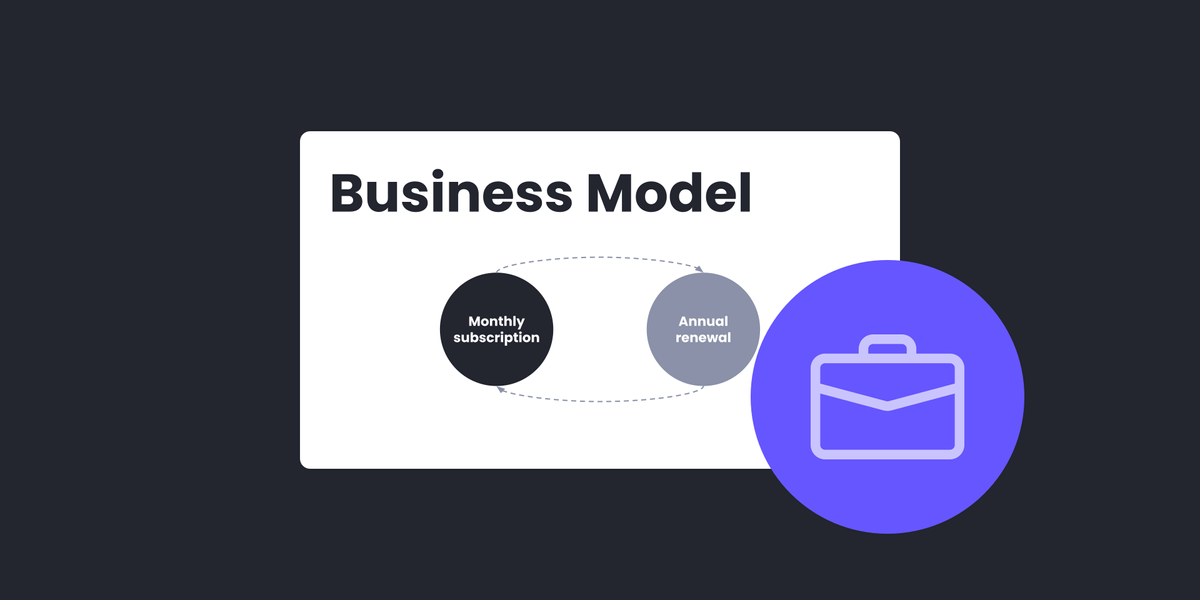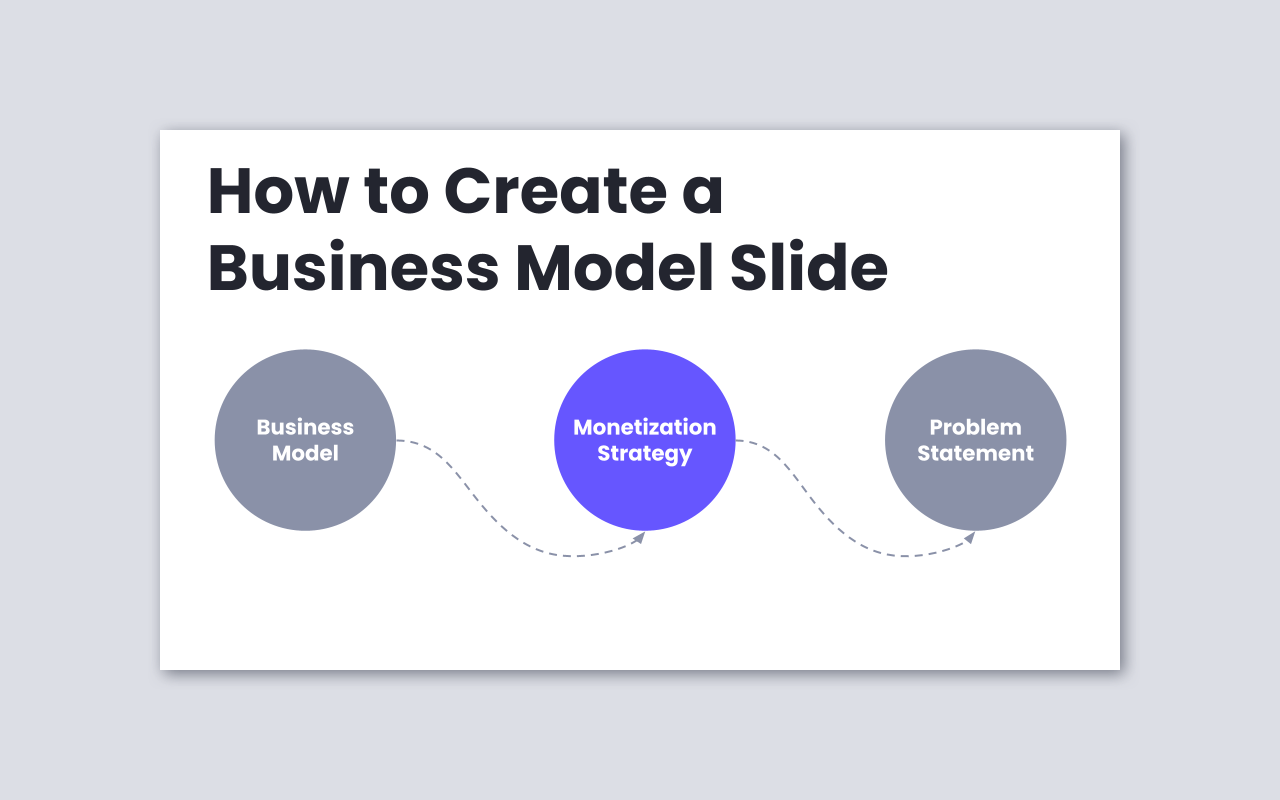How to Create a Business Model Slide for Your Pitch Deck
A business model slide is your startup’s roadmap to show investors how you make money, scale, and sustain long-term growth with clarity and impact.

Ever wondered why some startups think a business model slide is just a fancy way to say “we sell stuff”? If that made you cringe, you’re not alone! Many new founders misunderstand the business model slide, treating it like a boring sales pitch instead of the golden ticket investors crave.
So, what exactly is a business model slide? Simply put, it’s the part of your pitch deck where you show investors how your startup plans to make money and why it will keep making money as you grow. Investors often prioritize this slide because, at the end of the day, they want to see a clear path to profits and scalability.
Why is the Business Model Slide Important
Your business model slide isn’t just about dollars and cents, it’s about showing that your startup can grow big and stay profitable. Investors want to see that your business model is scalable, meaning it can handle growth smoothly by serving more customers and generating more traction without costs spiraling out of control.
It should clearly highlight your core revenue streams and pricing whether that’s subscription fees, commissions, or product sales, so investors understand exactly how money flows into your business. But it doesn’t stop there; you also need to explain your sales and distribution strategy, demonstrating how you reach your customers and keep them coming back for more.

How to Create a Business Model Slide
Visualize Business Model
A picture is worth a thousand words, especially when explaining complex ideas. Use flowcharts, tables, or diagrams to clearly show how your revenue streams flow, how you segment your customers, and how your value proposition connects these elements. This visual approach helps investors instantly grasp how your business creates and captures value without overwhelming them with text.
Highlight Primary Monetization Strategy
Focus on the main ways your startup makes money by clearly explaining how you charge your customers and how your pricing model works. Specify how your paying customers engage with your product or service. Bonus points if you include key metrics like retention rates or lifetime value to demonstrate how your business sustains and grows revenue over time.
Tie it Back to The Problem Statement
Keep it simple and jargon-free. Clearly communicate how your customers are willing to pay for your solution and how your business model gives you a competitive edge. This connection shows investors how your revenue strategy directly addresses the problem you solve, making your pitch more compelling and coherent.
"The true product of an entrepreneur is not the solution, but a working business model. The real job of an entrepreneur is to systematically de-risk that business model over time." as Ash Maurya once said on his book Running Lean: Iterate from Plan A to a Plan That Works. The real success for a startup lies not just in creating a product, but in continuously testing and refining a viable business model that reduces risk and drives sustainable growth.
Mistakes to Avoid
Overloading with Too Many Revenue Streams
Trying to list every possible way to make money can overwhelm investors and dilute the focus of your business model slide.
- Bad example: “We make money from ads, subscriptions, affiliate marketing, consulting, merchandise sales, and event tickets.” (Investors get lost in the noise.)
- Good example: “Our primary revenue comes from monthly subscriptions, with plans to introduce premium features and targeted ads in year two.” (Clear and focused.)
Failing to Highlight Unique Business Model Aspects
Simply stating how you make money won’t impress investors unless you clearly explain what makes your model different and defensible.
- Bad example: “We sell our app for $9.99.” (No explanation of why your pricing or model is special.)
- Good example: “Our subscription model includes personalized coaching, which competitors don’t offer, allowing us to charge a premium and increase retention.” (Shows competitive edge.)
Using Cluttered Design and Too Much Text
A crowded slide with dense paragraphs will lose investors’ attention before they understand your business model’s value.
- Bad example: A dense slide filled with paragraphs explaining every detail of pricing and costs. (Investors tune out.)
- Good example: A clean slide with bullet points and icons summarizing revenue streams and pricing, paired with a simple chart. (Easy to scan and understand.)
Frequently Asked Questions
What is the core question investors ask about your business model?
How does your startup make money and when will it become profitable? Outline your revenue streams, pricing, and scaling plan on one slide.
What mistakes do founders make on this slide?
Over-complicating the model, or making pricing unrealistic (e.g., trying to support enterprise sales with an SMB product). Make sure pricing aligns with your go-to-market plan.
Should I compare my model to competitors?
If relevant, show how your pricing or approach differs from market incumbents especially if you’ve innovated on cost, efficiency, or monetization method.
The Short of It
Your business model slide is crucial because a clear business model slide shows investors exactly how your startup makes money and proves it can grow profitably. This matters because investors want to back businesses with a scalable plan that delivers real returns over time. When you focus on your main revenue streams, keep your message simple, and connect it to the problem you solve, you make your pitch deck stronger and more convincing. If you're ready to create a business model slide that investors can easily understand and believe in, starting with our professional pitch deck template is a smart move. It’s designed to help you tell your story clearly and confidently.

Get a Professional Pitch Deck and Tell Compelling Stories
✓ Unique layouts ✓ Editable elements ✓ Free vector icons ✓ Compatible with Google Slides
Download now →